Multi-GPU Setups: The Basics Of CrossFire And SLI
Motherboards with multiple PCIe slots are becoming the norm these days, and the trend is being fueled by multi-GPU configurations. Configuring Nvidia's SLI and AMD's CrossFire technologies is easy, but how much more performance can you expect from them?
The Difference Between PCIe x8 And x16
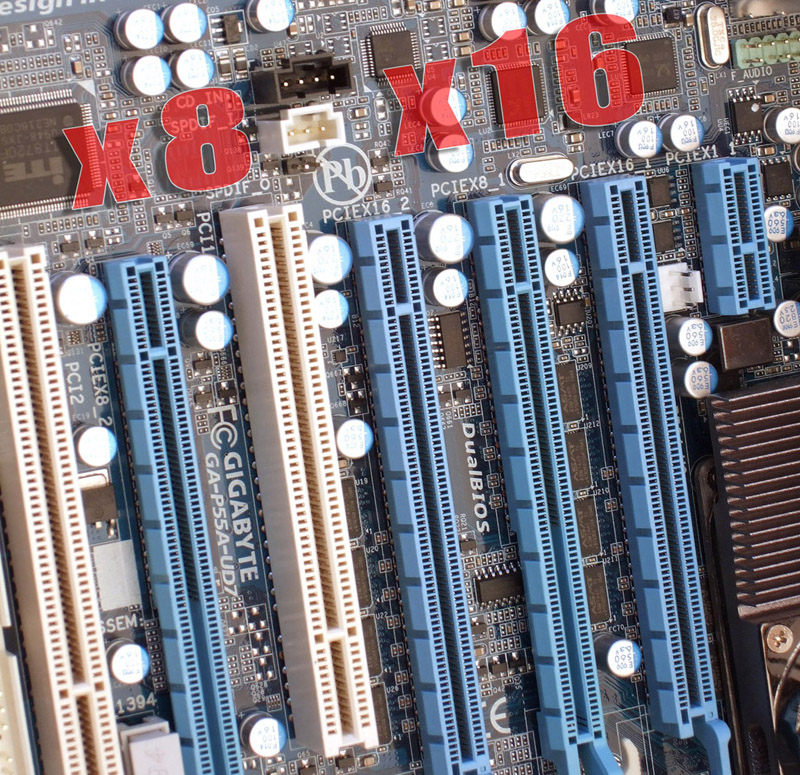
A motherboard doesn't always come with two fully-featured PCI Express x16 slots. Available PCI Express lanes are often distributed across two slots, meaning that the second PCIe port may only run eight lanes electrically. This also means that the speed of one physical x16 PCIe port decreases when you use expand out to a second slot. If you're running a P55-based platform, like our test system, this applies to you.
But don't worry yet. Our tests show that even with the fast Radeon HD 5870 and Radeon HD 5850 cards, the performance impact when switching from PCI Express x16 to x8 is only a few frames per second (remember to check out next week's coverage for more in-depth exploration of PCI Express scaling). Additionally, both cards are throttled at x8, even if you combine a x16 and a x8 slot. According to the GPU-Z tool, the CrossFire configuration is completely synchronized.
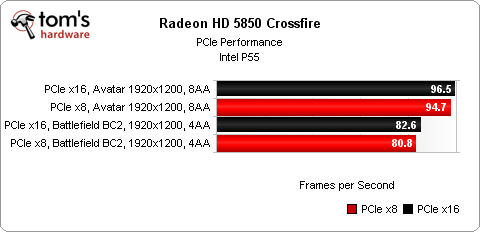
With Nvidia, you have a bit more flexibility in slot selection. Even the fastest graphics cards are recognized as an SLI configuration, even if you don't use the SLI bridge connector and instead let the PCIe interface handle all data transfers. However, this comes at the expense of some performance. Ideally, you should always use a bridge connector to link the two cards together. Interestingly, GPU-Z shows that when you combine Nvidia cards in x16 and x8 slots, each card in the SLI configuration still runs at the speed of its respective slot.
With a bridge connector, the difference in speed is within the measuring tolerance. Without a bridge connector, though, you can clearly see that the cards use different interface speeds, and you witness a performance hit of up to 13% in SLI mode.
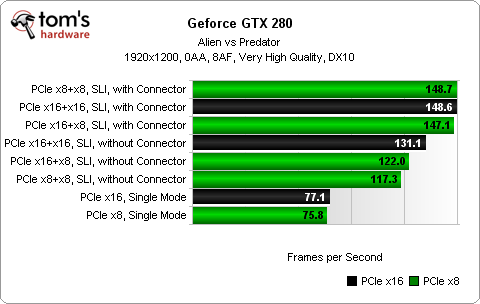
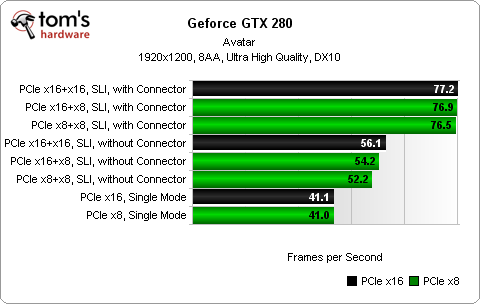
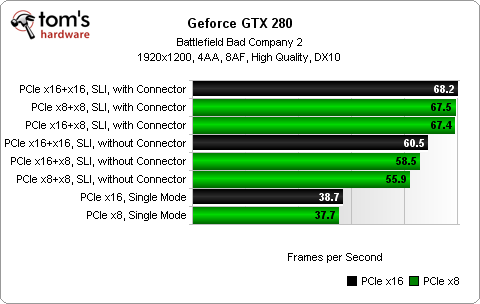
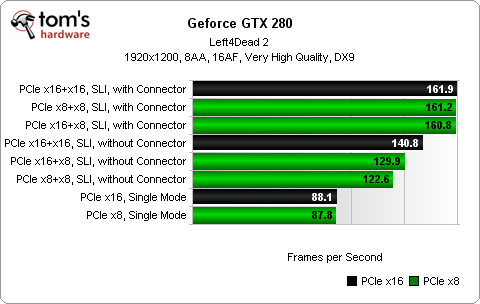
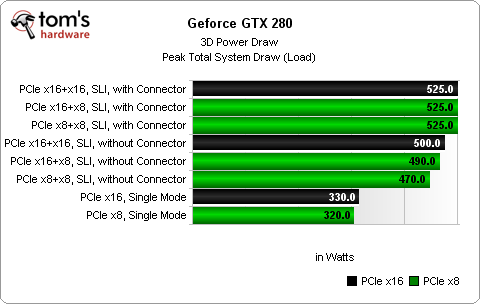
Stay On the Cutting Edge: Get the Tom's Hardware Newsletter
Get Tom's Hardware's best news and in-depth reviews, straight to your inbox.
Current page: The Difference Between PCIe x8 And x16
Prev Page Connectors Next Page Mixed-GPU Setups-
ramcrazy360 It's great to know there's so little difference between 8x and 16x preformance even with a 5850! I was worried about having a bandwidth issue with two 5770s, but it seems that won't be a problem.Reply -
Maziar Great review,however i wish you tested on resolutions like 2560x1600 and higher,because i think the main difference between 8x and 16x is in resolutions like that.Reply -
wildeast same as ramcrazy,Reply
i was going to get an i5 but that means a p55 mobo (x8+x8) not x58 (x16+x16), so i thought i should be getting x58 and i7 rig which is beyond my savings, thnx tom's am getting i5 + p55 now :) -
Tamz_msc Very nice article.It cleared a lot of confusion in my case.I would have liked to see scaling with increase in the number of CPU cores.Reply -
ruffopurititiwang Great article! Now we know what the deal is regarding multi-gpu and PCI-E lane speeds with mainstream setups.Reply
Now how about showing some love for top of the line setups? Can you apply the same tests to GTX 480/ATI 5870 Multi-gpu configuration + X58 mobo & 980X proc? -
rohitbaran On page 7, performance of Radeons in Alien vs Predator is not arranged properly with CPU speed.Reply -
lothdk rohitbaranOn page 7, performance of Radeons in Alien vs Predator is not arranged properly with CPU speed.Reply
All the tests are arranged by GPU performance not by CPU speed. -
TheStealthyOne I'll definitely be using this article as a reference for a dual 5850 machine I'm building :)Reply -
hixbot In every single TOMS article showing benches on CPU scaling, you use High resolutions with FULL AA and aniso! WHY?!Reply
I know thats how many would play the game, and it shows the performance that one would expect with different CPUs. It shows that we don't need to overclock or buy expensive CPUs, when the load (bottleneck) is on the GPU.
BUT if you would also show the CPU scaling in low resolutions and no AA/aniso, we could see how the CPUs might stack up. This is valuable for knowing how the CPUs perform in the future, when one might have upgraded the GPUs, and the bottleneck dissapears.
Yeah, yeah, this is not a CPU article... i know but still.. it shows CPU scaling, and every time I see CPU scaling demonstrated on toms, it's shown with a bottleneck on the GPU.
Humour us next time and include a bench or two with no GPU bottlneck (low res, eye candy). Just becaause that's not how we'd play the game, and just because the FPS would be insanely high, doesn't mean the numbers wouldn't be valuable. I complain about this in every article that includes CPU scaling.
It doesn't erk me that much here because this article isn't focused on CPUs. but for the love god, the next CPU article you do, when you test gaming, throw a bench or two in there with very low settings.